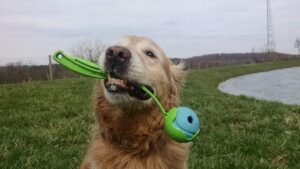I’m thinking about rewards all the time. Unwanted behaviors are typically maintained through reinforcement and we can use reinforcement to create new behaviors or change feelings. I help new students come up with some reward options prior to our first session and we do some additional planning after our first session together.
We want to have a variety of reward values for most dogs. Sometimes we want lower value rewards like dry dog food or tiny pieces of dry biscuits. Sometimes we need medium value, this might be pet store type treats. We want higher value rewards for challenging or important work – plain cooked meat, dried meat, canned dog food, cheese, egg, etc. Each dog is different. Some dogs think bread is best and some dogs don’t like fish.
During lessons I saw a few challenges with our food rewards:
- “He loves it” (or not) I have a surprising number of lessons where dogs take treats but only if we hold it a few inches from the dog’s nose. To me, this isn’t a dog “loving” a treat – he’s taking it because it’s there, but he won’t go out of his way to work for it. Our training progresses much faster as soon as we switch to something he is crazy about. In a recent lesson we had a great example – the small dog would take his soft pet store treats if we held it in front of his face, but if the treat was more than a few inches away he just didn’t care. We spent about 5 minutes at the first step of our training activity but were unable to progress further. When we switched to cooked chicken we were able to go through 10 training steps in a few minutes. I’m always looking at how the dog eats – when he eats the treat is he asking for more or going about his day?
- Too big or too small of pieces. If we use too-big pieces, our dogs fill up fast or take too long to eat the treat. Sometimes it doesn’t matter because we’re doing short sessions or we want a longer reward celebration. If we’re working in a very distracting environment, a dog might be eating a dried biscuit treat and then be surprised by someone appearing in the environment. If our treats are too small, sometimes the dogs say it’s not worth their effort.
- Distraction level isn’t appropriate: Even if our final goal is a recall/come when called from wildlife, we need to start easier. Rather than starting with the final goal, start easy. For some dogs this means we start training in the house to teach skills and start a foundation. For other dogs, we might start with intentional low-level distractions like me at a distance rather than another dog barking. Many dogs won’t eat if they’re overwhelmed – so we need to start with where they’re at. Arguably this is a training plan problem and not a reward problem – but most clients will report this as “the treats aren’t good enough,” so I tend to group it here. Evaluate the distractions in a given situation.
- Not an obvious cause and effect: We want the dogs to learn that their behaviors matter. If a dog looks to us, good things happen. If he stays when we asked, good things happen. Sometimes a dog isn’t clear because the timing is off – if we wait too long then he won’t connect his actions with the reward. Some dogs who are new to training need more experiences to learn they can make rewards happen.
- Other expectations: A dog might love playing fetch in the back yard, but we may need some additional steps before we can use tug or fetch as a reward. If a dog has had weeks, months, or years of “we do fetch for 20 minutes in the backyard,” then we need to teach the dog that he can earn the toy through his actions.
